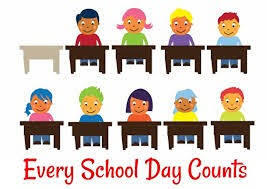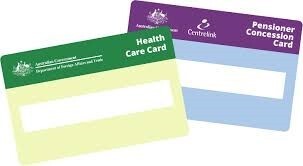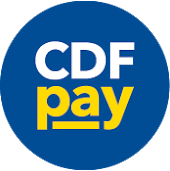Filter Content
Dear Parents and Carers
We are quickly approaching the end of term on Friday 23 June and it will be a busy day.
Pizza and Pyjama Day will happen on the last day of Term. Ordering Pizza is optional, children can bring their lunch as usual if preferred. As to with Pyjamas - studenst are welcome to wear their sport uniform if they would prefer to not wear their pyjamas. Please ensure they wear warm clothing on this day and shoes appropriate for play and sport classes, if they normally have sport on a Friday.
In the cold Winter months some families can really struggle. To support these people in need we are encouraging all families to donate non-perishable food so we can collate to provide to St Vincent de Paul. Students can bring these donations to school and we will deliver all donations to St Vincent de Paul before the holidays. This will then be distributed to families who need support this Winter. Please donate up to Friday 23 June.
If every family brought in one item per student we would have approximately 600 items to donate. Suggested items include:
- Tins of food (soups, baked beans, tuna)
- Pasta
- Cereals
- Milo/Tea/Coffee
- Toothpaste
- Toilet paper
- Boys can wear shorts in Terms 2 and 3 but must wear the school tie with the long sleeve shirt (the short sleeve does not have the appropriate collar for a tie)
- Girls can wear LONG grey socks with the tunic
- School beanie and scarf can be worn during Terms 2 and 3 (no alternatives)
As we approach the midst of Winter we encourage all families to donate non-perishable food to St Vincent de Paul. Students can bring these donations to school and we will deliver all donations to St Vincent de Paul before the holidays. This will then be distributed to families who need support this Winter. Please donate up to Friday 23 June.
If every family brought in one item per student we would have approximately 600 items to donate. Suggested items include:
- Tins of food (soups, baked beans, tuna)
- Pasta
- Cereals
- Milo/Tea/Coffee
- Toothpaste
- Toilet Paper
Foundation, Year 1 and Year 2 Mass - CHANGE of DATE
Please note that we have had to change the Junior School Mass from Wednesday 14 June to Tuesday 20 June due to Father Janeesh’s availability. This Mass will now be held at 2.15pm and all families are welcome to attend. It will be held in the modular building.
First Holy Communion 2023
We continue to pray for the remaining 19 students who will receive their First Holy Communion this coming weekend.
A big thank you to parents and carers for supporting the students in their faith at this time.
Please complete the Application for Leave During Term Form if your child is going to be absent for more than 3 school days. The form is below and can also be accessed via PAM in the Knowledgebank.
Here is the link for the St Clare's Parent Access Module (PAM)
St Clare's PAM
You username is the email address that you have registered with the school. The first time you log in we ask that you use the forgotten password feature to set your own password.
ALL parents must access PAM to receive up to date information and grant necessary permissions. Students will miss out on events if permission is not granted.
School Fees
Term 2 fees are now overdue. Please contact the school to arrange payment.
If you are experiencing financial difficulties please contact the school via finance@stclaresofficer.catholic.edu.au for a confidential discussion.
If you financial situation has now changes and you have a Pension or Health Care Card please let us know that this will impact your school fees payable.
On Tuesday 20 June the Victoria Police will visit our Year 5 and Year 6 Students
Children and young people receive education directly from influencers in their lives, including parents, carers, teachers and police.
The presentation will encourage critical thinking and learnings to prevent harm, to identify safe or unsafe situations and know when and how to seek help.
The presentations are delivered by State and Territory police to build positive engagement between children, young people and police, while equipping students with the knowledge and skills to be able to take actionable steps to maintain their safety at all times.
A SPECIAL REPORT: Respectful Language
In today’s world, it is common to hear socially offensive language on the streets, on social media channels, streaming services and in some forms of modern music. While swearing is becoming more common and less taboo, the use of derogatory language or the act of swearing at someone, or about someone, is a form of verbal violence. It transgresses the usual rules of social interaction by impinging on an individual’s self-image and sense of dignity.
It is becoming apparent that some young people are being influenced by the language they hear. Proliferating the use of swear words can sometimes normalise, glamorise and desensitise their impact for kids who may misunderstand the true meaning of some derogatory terms. Whilst some students may use swearing or derogatory terms as a misguided attempt at belonging, others may use it simply because they are still learning how to moderate their language and are not accustomed to making adjustments to suit different situations.
Although many schools enforce a zero-tolerance policy when it comes to swearing and derogatory language, parents need to also play an important part in enforcing this approach. Parents and carers can be proactive in monitoring what their children are viewing or being exposed to. Discussing the use of words or the origin of some derogatory terms and gaining insight into the reason behind their child’s use of such language can help prevent inappropriate or disrespectful language filtering into the classroom or the school yard, which is turn helps to build more tolerant, safe and connected communities.
This Special Report offers a number of guidelines to help manage a suitable approach when discussing the importance of respectful language.
We hope you take time to reflect on the information offered in this Special Report, and as always, we welcome your feedback.
If you do have any concerns about the wellbeing of your child, please contact the school for further information or seek medical or professional help.
Here is the link to your special report:
https://stclaresofficer.catholic.schooltv.me/wellbeing_news/special-report-respectful-language
CDFpay is a secure, safe and efficient method for ordering and paying for items through school.
Below you will find instructions for setting up your CDFpay account both if you are an existing parent "already have a CDF pay account" or a new parent.
Here is the link to head to our school CDFpay shop St Clare's CDFpay Shop
How to Help Kids Stay Safe Online
Adapted from: https://www.esafety.gov.au/about-us/blog Office of the eSafety Commissioner
- Start the chat
It’s not possible to be at your child’s side every second of the day, so it’s important to talk with them about online safety issues to help develop their critical thinking and ability to make good choices. It’s also good to let them know they can come to you for help if they have any concerns. You may feel they know more about the latest technology than you do, but you have more life experience to guide them.
- With primary school aged children use online devices in the open living spaces at home to make parent supervision part of the expectation for your child.
- Take the opportunity to set some boundaries around when and where they can use devices like tablets, smart TVs and gaming consoles, to help limit potential tech tantrums — you could even fill in an Early Years Family Tech Agreement
- Screen free time before bed is important for good sleep. Consider charging devices in a central location at a regular time each night to allow an hour screen free before bed.
- While you are all at home more, it’s a great time to co-view and co-play with your kids, so you can understand what they are doing and experiencing online.
- Learn about the games, apps, social media and platforms they are using at The eSafety Guide, including how to protect their information and report inappropriate content or conduct.
- Use parental controls and safe search options
Parental controls can help block your child from accessing specific websites, apps or functions. They can also monitor your child’s use of connected devices and set time limits. But beware! You cannot always rely on them — they should be used in combination with other online safety strategies.
- Parental controls are available on most tablets, smartphones, computers, TVs and gaming consoles.
- You can also download family safety controls or buy robust filters out of the box.
- You can set up child-friendly search engines, or select safe search settings on digital devices, to help prevent your child from stumbling across inappropriate sites and content.
- Check smart toy settings
It’s surprising how many toys or devices can connect online these days, from drones and smart teddies to tablets and wearables. While they can be both entertaining and educational, they can reveal your child’s personal details and location — and allow other people to contact them without you knowing. You can help keep them stay safe by:
- setting strong passwords
- turning off location settings
- limiting the amount of personal information shared.
The eSafety Gift Guide has advice on what to check for and how to stay safe.
- Look out for unwanted contact and grooming
Unwanted contact is any communication that makes your child feel uncomfortable or unsafe, even if they initially welcomed the contact. It can come from a stranger, an online ‘friend’ or even someone they actually know. At worst, it can involve ‘grooming’ — building a relationship with the child in order to sexually abuse them.
You can help by:
- making sure their accounts are private — including chat functions on games
- encouraging them to delete requests from strangers and any contacts they don’t know in person
- checking in with your child as they use online devices in the open living spaces at home
- reporting and blocking anyone suspicious on a website or service
- remembering that if suspicious online contacts become aggressive or threatening you should contact your local police.
- Know the signs of cyberbullying
Kids who are bored by long periods at home can pick at each other, and that happens online too. So it’s important to keep an eye out for cyberbullying. It can include mean posts, comments and messages, as well as being left out of online group activities like gaming.
- Remember, when they are away from school, kids have less access to their usual support systems, including friends, teachers and counsellors.
- eSafety research shows that girls are more likely to be affected than boys and the person doing the bullying is generally someone they know from school.
- Watch out for signs such as your child appearing upset after using their mobile, tablet or computer, being unusually secretive about their online activities or becoming withdrawn.
- Cyberbullying can make social isolation worse and the longer it continues, the more stressed kids can become, impacting on their emotional and physical wellbeing.
What to do if your child is being cyberbullied
As parents, our first instinct may be to ban our children from social media, disable the wi-fi or turn off the data access. But this can actually compound the problem, making your child feel as if they’re being punished and heightening their sense of social exclusion.
There are four simple steps that can help minimise the harm:
- report the cyberbullying to the social media service where it is occurring
- collect evidence of the cyberbullying material
- if the material is still public 48 hours later, make a report to eSafety — we work with social media platforms to have the harmful content removed.
block the offending user.














